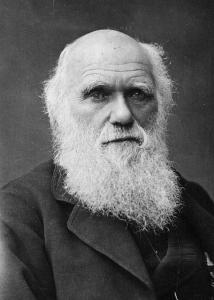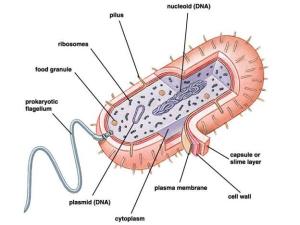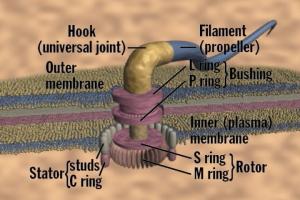
Ever since Darwin and his work Origin of the Species, written in 1859, it has been more or less accepted that evolution was the only explanation of where all life originated from and that intelligent design was only a religious belief. However, with the advancement of technology scientists have been able to study life on a molecular level with powerful microscopes not available in Darwin’s time. With the discovery of DNA and the complex molecular machinery of certain bacteria many scientists are challenging the theory of evolution and believe intelligent design is worth reconsidering and should be put back on the table for consideration.
In this article I wish to present the mounting evidence in favor of intelligent design as an explanation to the origin of life. I will look at microscopic molecular machines; tiny machines composed of molecular material that compare in many ways to machinery created by human beings. I will look at DNA and the complex information it contains. I will also consider some of the flawed reasoning in the scientific world that is actually shutting out certain realms of possibility and does not encourage good science.
In Darwin’s time a cell was thought to be no more than a ball of protoplasm or Jell-O and hard to explain. This was the accepted explanation until the 1950’s when our knowledge of the cell exploded with the use of the electron microscope. With this instrument it was found that four billion single-celled bacteria could fit into a thimble. As these cells were further studied some astounding observations were made. Each and every cell no matter how small each contained circuits, assembly instructions and microscopic machines to carry out these instructions, the complexity of which Darwin could never imagine!
These molecular machines were like trucks that moved supplies from one end of the cell to the other. Others captured sunlight and converted it to usable energy. Jed Macosko, a molecular biologist from the University of California, Berkley, notes, “There are as many machines in a body as there are functions for a body to do.”.
Where do these machines come from? Are they only a product of chance, random natural selection, as Darwin believed? Darwinism falls far short in explaining. To understand we need only look at the flagellum of bacteria. The flagellum is a tiny tail that spins like a propeller on an outboard motor to move the bacteria through fluid. Magnified 50,000 times not only are we able to examine the tail and the bacteria but we are able to observe an amazing motor that drives the tail that any honest observer would call an engineering marvel. This motor runs at 100,000 rpm and is hardwired into a single transduction sensory mechanism so it is constantly getting feedback from its environment. And even though it is spinning so fast it can stop on a dime and only takes ¼ turn to achieve this and spin in another direction. It has a stator, a rotor, a u-joint, a drive shaft and a propeller. It has a total of 40 parts working in harmony together. It reminds you of a man-made outboard motor (see diagram)!


When viewing the diagram one cannot help but recognize it as a machine because that accurately describes what it does. An honest observer could no more view this living machine and say it is a mere product of chance and natural selection as Darwinism asserts anymore than one could observe an outboard motor and come to such a conclusion.
Furthermore, every part must be present at the same time for it to function at all. This is an important consideration. Dr. Michael J. Behe, a biochemist at Lehigh University calls this ‘irreducible complexity’. And I quote, “Multi-component parts in any given system or organelle, are each of them necessary for function. If you remove one part you lose function of that system.” Let us look at a simpler machine we are all familiar with to understand this concept, the mousetrap. It has 5 basic pieces. It consists of a catch to hold the bait, a strong spring, a hammer, a holding bar to secure the hammer and a platform on which system is mounted. If any single part is defective or missing it will not work. It is an irreducibly complex system. This applies to biological machines also like our flagellar motor.
Now, Darwin would have us believe that each of these components developed slowly over long periods of time and eventually became a useful motor. As Darwin said, “Natural selection acts only by taking advantage of slight successive variations. She can never take a sudden leap but must advance by short and sure though slow steps.” Now Darwinism also teaches that natural selection can only succeed if these random changes, that is to say each separate change, provides some advantage to the evolving organism in its struggle for survival. In other words, let’s say the bacteria developed a flagellum (tail) with no motor. By itself it offers no advantage to the organism and according to the theory of natural selection it would be eliminated not a motor built for it. Darwinism cannot account for irreducible complexity only intelligent design can account for this. Darwin himself even said, “If it could be demonstrated that any complex organ existed which could not possibly have been formed by numerous, successive, slight modifications, my theory would absolutely break down.” I think that day has come.
“If it could be demonstrated that any complex organ existed which could not possibly have been formed by numerous, successive, slight modifications, my theory would absolutely break down.” —Darwin
I think that day has come.
Scientists now know that all cells consist of proteins which are composed of amino acids linked together in chains and that proteins are the building blocks of life. In fact, thousands of proteins can be contained in the smallest, simplest cell. Twenty different amino acids in various combinations make up a protein molecule. You can look at these twenty amino acids like the twenty-six letters of our alphabet. Though we only have twenty-six letters in our alphabet we can combine them in various ways and produce thousands of words. It is the same with the twenty amino acids. These twenty amino acids can be arranged in various ways and produce over 30,000 known protein molecules! But they must be arranged in a certain order to produce a protein just as our alphabet must be arranged a certain way to form words otherwise all you have is gibberish, or in case of our protein molecule, a useless organism that will be destroyed by the cell.
We now know that proteins cannot assemble without a very complex set of instructions known as DNA.
So, what produces this precise arrangement of amino acids and proteins to form all life on our planet? We now know that proteins cannot assemble without a very complex set of instructions known as DNA. This chemical code has been called ‘the language of life’. DNA is precisely arranged and absolutely necessary for the ordering of assembly of amino acids into proteins and proteins into more complex forms of life. Bill Gates has called DNA the most complex computer code ever written! The chances for this just ‘happening’ are like dropping scrabble pieces and them spelling out even the simplest of sentences on their own by mere chance. Without DNA there is no self-replication, there is no life. Natural selection or any other theory, other than intelligent design, cannot explain the origin of DNA and what it does or how it does it. No, this battery of incredibly complex instructions has all the hallmarks of intelligent design. Cells cannot exist without DNA; therefore DNA had to already be in place before life began.
Let’s take a look at how this process takes place. DNA is unzipped by a molecular machine. This machine makes a copy of the instructions contained therein and forms another machine called messenger RNA. This process is called transcription. This RNA then enters a cell and goes precisely to an identified area where it attaches itself. These instructions take amino acids from other parts of the cell via other molecular machines and then instruct these amino acids how they should link together. Their arrangement determines the type of protein it will be. It is then rolled into a ‘barrel’ where it is compressed into the shape it will be. It is then moved by another molecular machine that moves it where it needs to be. I don’t know about you but that sounds like a very efficient factory of intelligent design!
Science ought to search for truth wherever the evidence leads them. Instead biologists are told to start with an assertion: “Biologists must constantly keep in mind that what they see was not designed but evolved.” (Francis Crick, Nobel Laureate, DNA research.) Now, I ask you, does that sound like good science to you?
Statements like this rule out evidence before it even has time to speak. In other words he is saying, and most biologists are taught to believe, you must limit yourself only to explanations that have natural causes. This is only done when it comes down to exploring the origins of life. If you viewed writing in the sand that said, “Johnny loves Sally” would you attribute it to the natural cause of the ocean or wind writing this in the sand? If you found an old watch would you say it was formed by natural causes? No, of course not, yet something as complex as the human body and even the complexity of the tiniest cell scientists want to stubbornly claim was formed by natural causes. William Dembski, a mathematician, in his book Design Inference, explains how we recognize intelligent activity. He explains that when we see an improbable pattern in a recognizable object we can infer it was caused by intelligent design. For example, a mountain is a recognizable object. The presidents carved on Mt. Rushmore are an improbable pattern. It is obviously produced by something other than a natural cause. We recognize faces we have seen somewhere else so we rightly recognize it as intelligently produced and therefore designed.
19th century science accepted that there were only two fundamental entities: matter and energy. Now there is a third, that third entity is INFORMATION.
There is no entity in the known universe that stores or processes more information more efficiently than DNA. There have been three billion characters recognized in one DNA molecule. There is no natural cause that produces information. Only intelligence produces information. It cannot be denied that DNA is derived from intelligence. Healthy science seeks the truth and lets the evidence prove or disprove it. “Certainly intelligent design has religious implications but it does not rely on religious premises. These complex systems cannot be explained by natural causes therefore intelligent design cannot be ruled out regardless of its metaphysical implications.” (Behe). Behe also notes that in the 19th century science accepted that there were only two fundamental entities: matter and energy. Now there is a third, that third entity is INFORMATION. “DNA is an artifact of mind and can only be explained by intelligent design.” (Behe). Therefore the case for intelligent design as the origin of life cannot be ruled out or ignored any longer.













